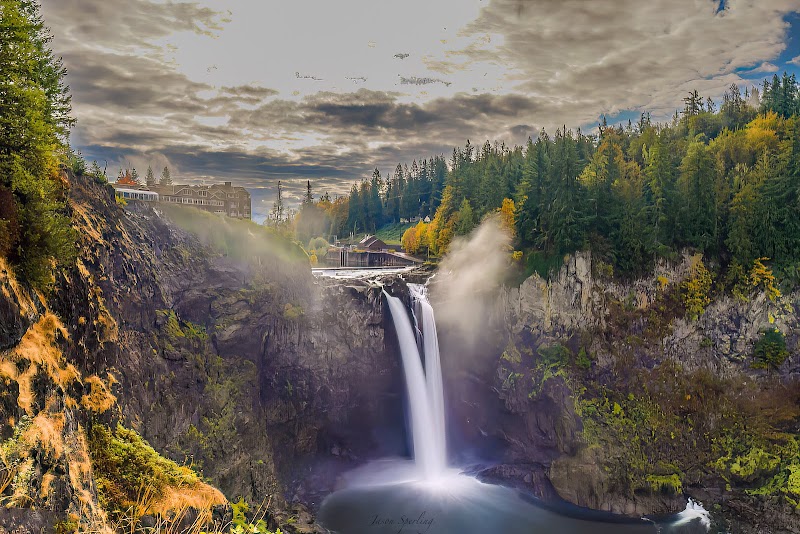
The Ultimate Guide to State Parks for Camping and Outdoor Adventure
Discover top state parks that redefine camping and outdoor adventure across the U.S. From rugged hikes to guided tours, this guide equips you with the essentials and insider tips to plan your next escape into nature.
Choose Footwear for Terrain
Wear hiking boots or trail shoes suited to elevation and surface conditions to avoid injuries and enhance comfort.
Hydrate and Filter Water
Bring a water filtration system for on-trail refills from natural sources—rivers often challenge with swift currents but provide fresh water.
Book Campsites Early
Secure your camping spot in advance, especially for peak seasons to avoid last-minute difficulties at popular parks.
Pack for Changing Weather
Layer your clothing to adjust to sudden temperature shifts common in state park environments.
The Ultimate Guide to State Parks for Camping and Outdoor Adventure
The Best State Parks for Camping and Outdoor Adventure
When the call of the wild beckons with the promise of fresh air and rugged terrain, state parks offer some of the best backdrops for camping and outdoor excitement. From towering pines to winding rivers, these parks challenge you to engage with nature on its own terms—sometimes serene, sometimes fierce. Whether you’re pitching a tent under a canopy of stars or hitting the trails to chase panoramic views, knowing where to go and how to prepare transforms any trip into a smooth adventure.
Top Parks by Region
-
Pacific Northwest: Mount Si State Park in Washington is a practical favorite. The iconic 8-mile roundtrip hike ascends 3,150 feet, threading through dense forests and exposing views that demand a breath. Nearby rivers dare hikers to pause and feel the current's force.
-
Midwest: Devil’s Lake State Park, Wisconsin, offers rock bluffs rising sharply above tranquil waters. Hiking here ranges from moderate strolls on bluff paths to strenuous climbs with 500-foot elevation gains.
-
South: Ocala National Forest, Florida, invites campers to explore freshwater springs that seem almost alive—pushing clear, cool water into serene pools. Trails accommodate all levels, while camping options range from primitive to modern.
-
Northeast: Bear Mountain State Park in New York packs hiking, camping, and family-friendly adventure in one spot. The clamoring Hudson River below adds character, challenging visitors to look beyond the trail.
Camping Essentials
Packing smart turns a trip into an experience that energizes rather than exhausts. Lightweight gear is a must, especially for longer treks. Invest in sturdy, broken-in footwear tailored to the terrain—whether rocky bluffs or sandy forest floors. Hydration packs paired with water filtration are key when natural water sources are accessible but require treatment. Keep first aid basics handy and plan your arrival around park check-in times to secure your spot and get oriented.
Guided Adventures Worth Booking
State parks often offer guided tours that reveal secrets outsiders rarely see. From dusk wildlife kayak tours in Ocala to interpretive hikes at Mount Si, these excursions add context and safety. Guided climbing lessons in Devil’s Lake and geology-focused treks in Bear Mountain blend education with adrenaline. Booking ahead is wise during peak seasons.
Why Use State Park Guide
State Park Guide is your streamlined resource for locating premier state parks to match your adventure style. Their comprehensive database provides trail descriptions, campsite availability, and insider tips, eliminating guesswork and saving planning time. With direct booking links and real visitor reviews, this platform empowers your outdoor travel decisions with confidence and clarity. Start your next trip ready—at State Park Guide.
For those seeking a balanced adventure, combining raw nature with practical prep is the best path forward. State parks offer challenge and calm, inviting you to experience what happens when you meet the outdoors on equal footing.
Nearby Trips
All Adventures
Boat Charters
Water Activities
Adventures near Seattle, Washington
Discover the unique and memorable adventures that make Seattle, Washington special.
Frequently Asked Questions
What permits do I need for camping at state parks?
Most parks require a camping permit or reservation, especially during peak seasons. Always check the specific park's website or use State Park Guide to secure your spot ahead of time.
Are pets allowed on trails and campsites?
Pet policies vary. Many parks allow dogs on designated trails but require leashes and restrictions in certain areas to protect wildlife. Review park rules before bringing pets.
What wildlife should I expect to see?
Depending on the region, expect deer, birds of prey, small mammals, and occasionally larger animals like bears or coyotes. Respect all wildlife by maintaining distance and securing food.
Can I do guided tours while camping?
Yes, many parks offer tours that can be booked separately or as part of camping packages. These include hiking guides, kayaking tours, and educational walks—booking in advance is recommended.
What safety measures should I follow on hikes?
Stay on marked trails, carry enough water, check weather forecasts, and inform someone about your route. Bring a first aid kit and know basic navigation skills.
Are campfires allowed in state parks?
Campfire regulations differ by park and season, often restricted in dry conditions to prevent wildfires. Use designated fire rings and confirm current rules before lighting a fire.
Recommended Gear
Hiking Boots
Provides traction and ankle support on varied terrain.
Water Filtration System
Enables safe hydration from natural water sources.
Layered Clothing
Allows temperature regulation during variable weather.
Headlamp or Flashlight
Ensures visibility during dawn, dusk, or emergency situations.
Local Insights
Hidden Gems
- "Sunset Point overlook with views beyond main park trails"
- "A small waterfall trail rarely crowded in Mount Si State Park"
Wildlife
- "Black bears and Roosevelt elk in the Pacific Northwest parks"
- "Great blue herons near water bodies"
History
"Many parks protect areas used historically by indigenous peoples and early settlers, providing cultural interpretive trails and signage."